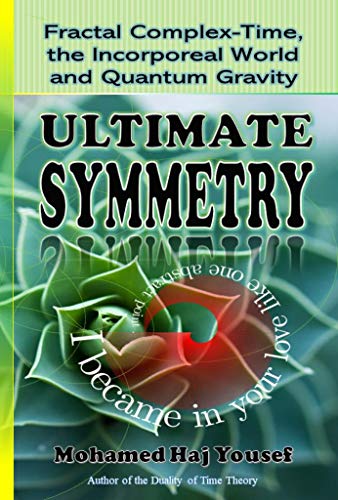IV.4 Granular Geometry and Absolute
Homogeneous Space
As we mentioned in section I.4.3, the Duality of Time
Theory will have significant implications on geometry and number theory,
because complex numbers are now genuinely natural, while the reals are one of
their extreme approximations that are realized only when moving at the speed of
light. Real numbers are the property of vacuum that is an absolute space
without time, while the physical reality is evolving in space-time, thus
covered by the hyperbolic granular geometry on ,
rather than the abstract Euclidean geometry which describes absolute space
continuum, such as or .
Therefore, if we could incorporate the inner and outer components of time
properly into geometry, we may be able to get rid of various persisting
problems, especially those related to infinities and singularities. In order to
achieve this goal, applied mathematics must obey the normal level of symmetry,
which is Lorentz symmetry, because it deals with practical situations that
always involve time, so it is subject to the laws of relativity. After setting
the rules correctly for relativistic mathematics, we can then apply the
appropriate approximations depending on the particular systems under question,
just like we normally differentiate between classical and relativistic physics.
This is in contrast with abstract mathematics that should be primarily understood
as timeless counting , or moving at the speed of light, in all directions, in
which case we can assume real and normal complex numbers and
.
For example, we cannot suppose that real numbers arereal
unless we are moving at the speed of light, so whenever we want to work with
real numbers we must know that we are incurring some errors that could be
negligible in most situations but also could become huge and completely faulty.
Abstract mathematics is the language of the divine and spiritual realms,
because they are based on continuous spaces, while the physical and
psychological worlds are primarily based on the granular hyperbolic geometry.
We could use this abstract language in hypothetical situations, where time is
not an important factor, but that should be approximated to suit the particular
problem we are trying to solve. This approximation is achieved by applying the
laws of Lorenz transformations on simple counting just as we apply them in
relativistic physics problems. Practically, however, it may not be easy to
incorporate time into the core of mathematics, but if we could do that
properly, the boundaries between math and physics would vanish, and we shall
find many fundamental constants and parameters in physics automatically
emerging from the mathematical equations, including for example the speed of
light in vacuum or in any other medium, which is the normalized value of the
fractal dimension of the respective medium, as we shall discuss in section I.2.2.
Also in section III.3.3 we shall see how inertial mass is generated as property
of the complex-time geometry.
Mathematics started in Mesopotamia and Africa when the
ancient civilizations settled around these agricultural regions, and they
needed measuring and plotting the land, and also trading and calculating the
taxes. Consequently, a sophisticated system of numbers and geometry was
developed by the Sumerians, Babylonians and ancient Egyptians. The decimal
system, using base , was
used by the Egyptians, while the Babylonians used the sexagesimal system, with
base .
Modern mathematics is still primarily based on the decimal system, while the
latter is still being used today in reporting time and measuring angles.
Common intuition indicates that numbers and counting began
with the numberone, though it might have been denoted in various
manners, depending on the different civilizations. Systematic counting started
in Sumeria as a series of tokens represented something tangible, which was
followed by the invention of writing and arithmetic. Subsequently, they
transformed the number one from a unit of counting to a unit of measurement,
and they used the cubit as the length equals to a man s forearm, from elbow to
fingertips, plus the width of his palm. They had officially ordained sticks
which they were kept in the temples, and they made many copies from these
original prototypes. With this guarded and precise unit of measurement, they
were able to create colossal buildings and monuments with wondrous accuracy.
After studying these ancient systems, Pythagoras introduced
the mathematical concepts to the Greek, beginning with the idea of odd and even
numbers, which were considered male and female, respectively. He is most famous
for his Pythagorean theorem, and he was one of the world s first theoretical
mathematicians, while Archimedes was the first to apply numbers on geometry.
For example, he worked out how to turn the surface of a sphere into a cylinder,
devising the formulas that later helped mapping the surface of the globe into a
flat map. He is most famous for inventing a method of determining the volume of
an object with an irregular shape. The answer came to him while he was bathing,
where he was so excited that he leapt from his tub and ran naked through the
streets screaming Eureka! , which is Greek for I have found it .
Nevertheless, along with this first systematic study of
numbers and geometry by the Greek philosophers Pythagoras and Archimedes,
similar studies also occurred at around the same time by the Indian, the
Chinese, and the Mayan. India pioneered almost every field of mathematics, from
the numeral system and arithmetical operations to the invention of zero and the
notion of infinity. The Hindu-Arabic numerals system with its main operations,
currently being used throughout the world, started developing in India in the
first millennium AD, and it was transmitted to the West via Islamic
mathematicians who also developed and expanded the mathematical concepts known
to these civilizations. Many Greek and Arabic texts on mathematics were
translated into Latin, leading to further development of mathematics in
Medieval Europe, as a result of interacting with new scientific discoveries,
which eventually lead to the development of infinitesimal calculus, by both
Newton and Leibniz.


















